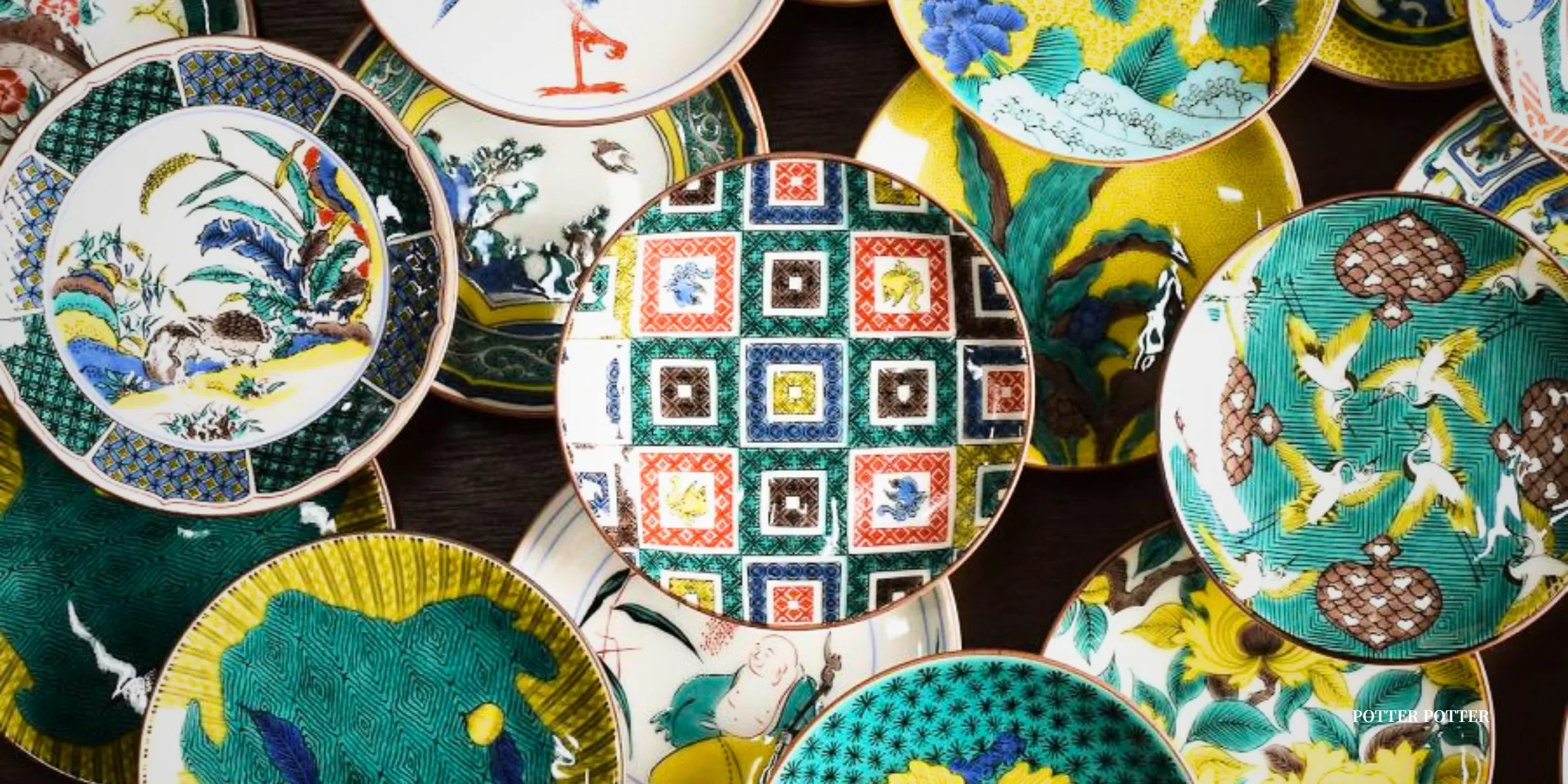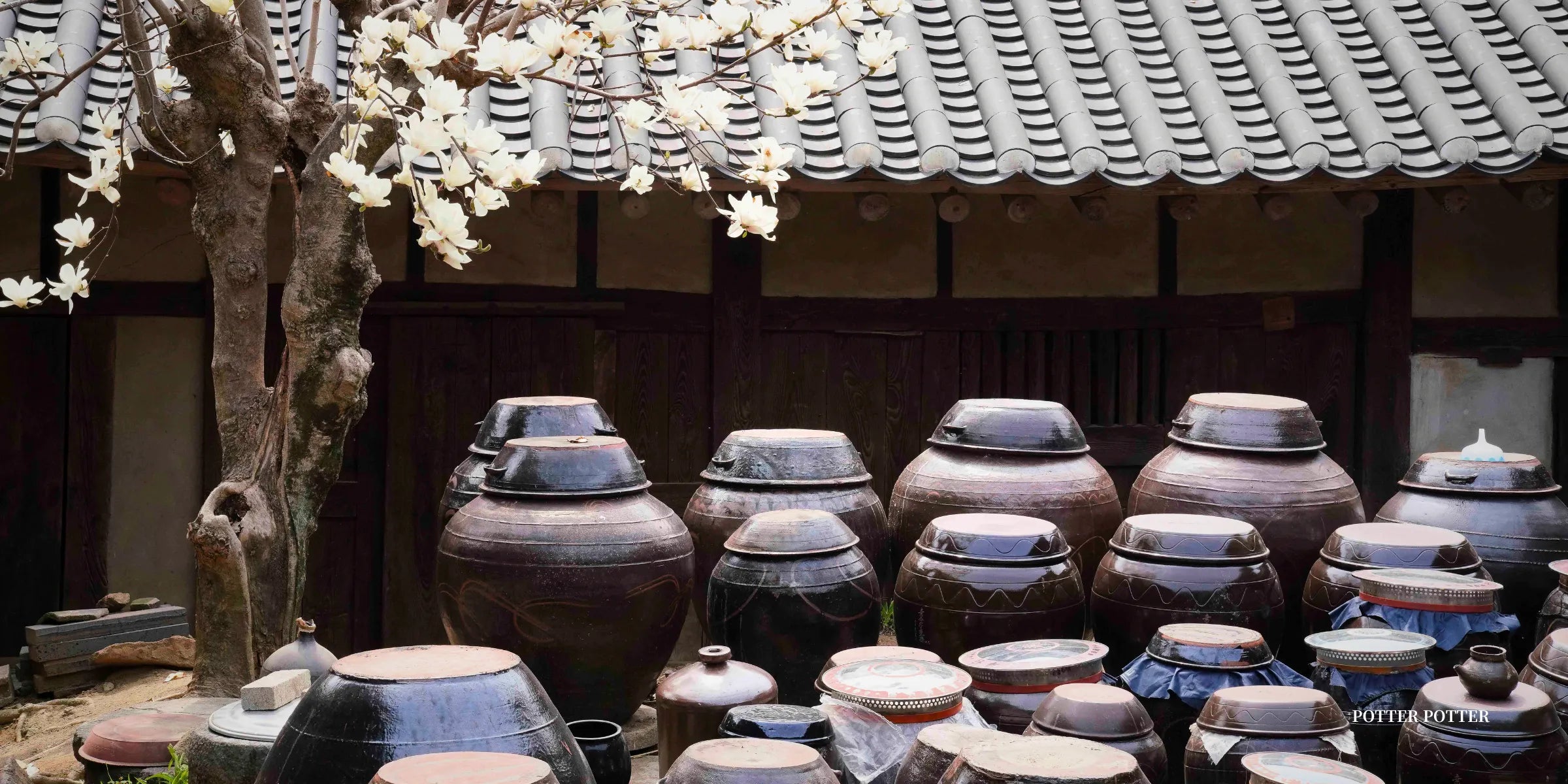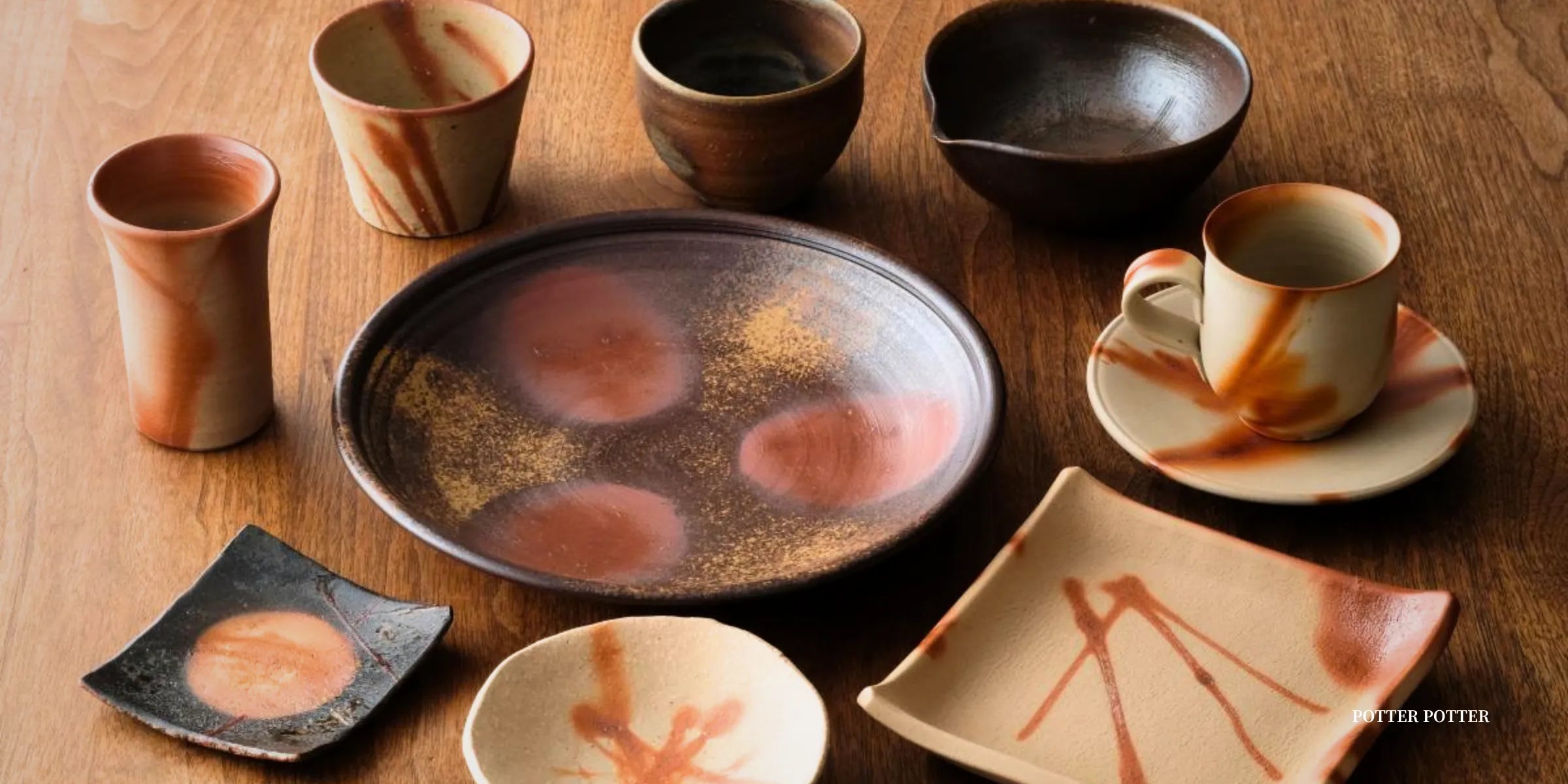
Kutani Ware: Vibrant Porcelain from Ishikawa Prefecture
Have you ever wondered what gives Japanese ceramics their unique beauty? Kutani Ware, a vibrant porcelain from Ishikawa Prefecture, is renowned for its bold colors and intricate designs. What sets it apart from other ceramics? Let’s explore its fascinating history, stunning craftsmanship, and enduring appeal.

|
Table of Contents |
History of Kutani Ware
Kutani Ware, or Kutani-yaki (九谷焼), originated in the mid-17th century during Japan’s Edo period in the village of Kutani, located in present-day Ishikawa Prefecture. This region, known for its harsh winters and remote villages, became home to a vibrant ceramic tradition that still thrives today.
The history of Kutani Ware can be divided into two main periods: “Old Kutani” (古九谷, Kokutani) and “Revived Kutani” (再興九谷, Saikō Kutani). The production of Old Kutani began around 1655 when the powerful Maeda clan of the Kaga Domain discovered clay suitable for porcelain production in the mountainous region of Kutani. To establish a local porcelain industry, the Maeda clan sent a craftsman named Gotō Saijirō to Arita, in the Saga Prefecture, to learn the advanced techniques of porcelain making.
Upon his return, Gotō and his apprentices began producing vibrant porcelain works characterized by bold designs and rich colors. These early works, known as “Old Kutani,” featured a unique color palette that included deep greens, yellows, purples, and blues, collectively known as the “Kutani Five Colors” (Kutani Gosai). The most distinctive feature of Old Kutani pieces was the use of these colors in combination with bold, dynamic compositions often depicting nature, landscapes, and birds.
However, by the early 18th century, Kutani Ware production mysteriously came to a halt. Some theories suggest that financial difficulties or a lack of resources led to the closure of the kilns. For nearly 100 years, Kutani Ware disappeared, and it wasn’t until the early 19th century that the art of Kutani was revived.
In 1806, a new kiln was established in the Kasugayama area of Kanazawa City under the guidance of Aoki Mokubei, a Kyoto-based potter. This marked the beginning of the “Revived Kutani” period, which saw a resurgence in Kutani Ware’s popularity. New kilns emerged, such as the Yoshidaya, Mokubei, and Shoza kilns, each developing its unique style while continuing to use the signature Kutani Five Colors. This revival firmly established Kutani Ware as one of Japan’s most treasured porcelain traditions, and its vibrant designs continue to captivate collectors and art lovers worldwide.
Characteristics of Kutani Ware
Kutani Ware is known for its vivid colors and intricate designs, but what truly sets it apart is the overglaze technique. This technique involves painting designs on the surface of already-glazed porcelain, followed by a second firing at lower temperatures. The result is a bold, glossy finish with vivid color contrasts that highlight the intricate patterns and motifs on each piece.
Kutani Five Colors
At the heart of Kutani Ware’s charm are the Kutani Five Colors, or Kutani Gosai: red, yellow, green, purple, and dark blue (often referred to as Prussian blue or cobalt). These colors are applied in various combinations, creating a rich visual tapestry that reflects the artistry of the craftsmen. The bold use of color gives Kutani Ware its signature look, often described as both striking and elegant.
In particular, these vibrant hues are used to depict nature-inspired motifs, such as flowers, birds, and landscapes. The meticulous painting of intricate designs is one of Kutani Ware’s defining features, with each piece showcasing the skill and creativity of its artist. Additionally, some pieces feature geometric patterns or intricate lines that enhance the overall aesthetic.
Role of Kilns and Their Unique Styles
One interesting aspect of Kutani Ware is that the style and design often depend on the kiln from which the piece originates. Several famous kilns, such as Yoshidaya, Mokubei, and Shoza, have developed their distinct styles over the years. For example, Yoshidaya kiln pieces are characterized by their subdued tones and the absence of red, with a focus on green, yellow, purple, and blue. In contrast, Shoza kiln pieces often feature intricate detailing and gold accents, creating a sense of luxury and opulence.
The different kilns that produce Kutani Ware also contribute to the diversity of design and expression within this ceramic tradition. Today, artisans continue to experiment with both traditional and contemporary motifs, ensuring that Kutani Ware remains relevant and admired in the modern era.
Global Influence of Kutani Ware
Kutani Ware’s international recognition can be traced back to the late 19th century when Japan began to open its doors to the world. The 1873 Vienna World Exposition marked a turning point for Kutani Ware, as it was presented to an international audience for the first time. The colorful and ornate designs quickly captured the attention of art collectors and porcelain enthusiasts, earning Kutani Ware a place among Japan’s most prized exports.
During the Meiji era, Kutani Ware gained even more popularity abroad, particularly in Europe. Many Kutani pieces were produced specifically for the export market, and the bold designs and use of gold were particularly appealing to Western buyers. As a result, Kutani Ware became highly sought after by collectors, and its vibrant style influenced European ceramics of the time.
Even today, Kutani Ware continues to be revered both in Japan and around the world. In recent years, modern Kutani artists have pushed the boundaries of traditional designs, creating contemporary pieces that still retain the essence of the centuries-old craft. Kutani Ware remains a symbol of Japanese craftsmanship, blending tradition with innovation to produce pieces that are both functional and beautiful.
The End.
Kutani Ware, with its bold colors, intricate designs, and centuries-old tradition, is a testament to the skill and creativity of Japanese artisans. From its humble beginnings in the mountains of Ishikawa Prefecture to its international recognition, Kutani Ware has evolved while staying true to its roots. Today, Kutani pieces can be found in homes, galleries, and museums around the world, continuing to inspire awe with their vibrant beauty.
If you’re looking to bring a piece of Japanese tradition into your home, Kutani Ware is a perfect choice. Whether you’re drawn to its historical significance or its stunning artistry, Kutani Ware offers a unique glimpse into the world of Japanese porcelain. You can start your journey with a simple Kutani plate or cup, or explore more elaborate pieces such as vases and tea sets. Whatever you choose, Kutani Ware is sure to add a touch of elegance and color to your collection.

